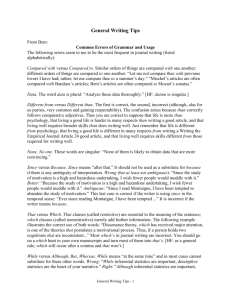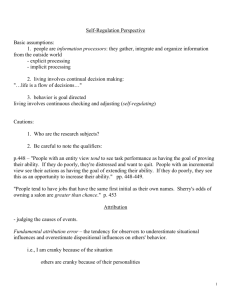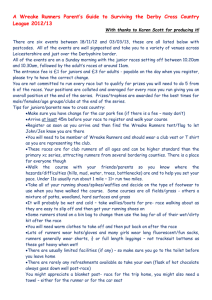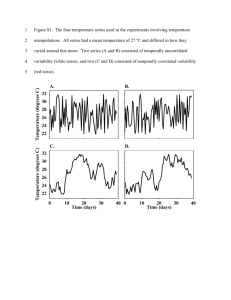Mischel`s Interactional Model of Personality
advertisement
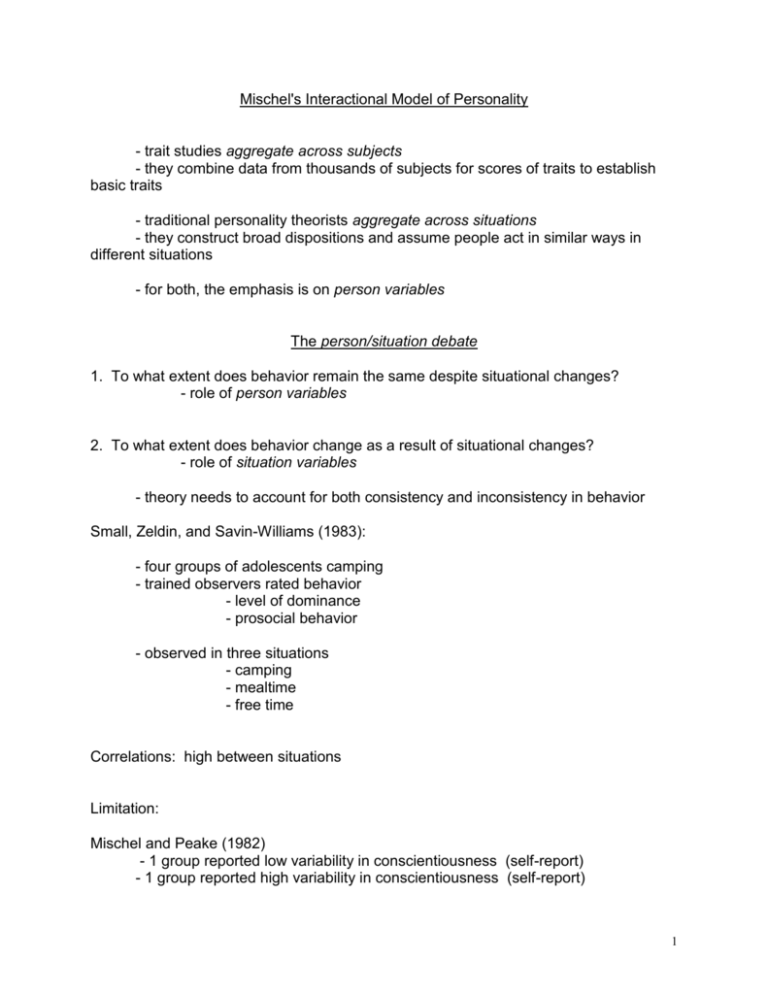
Mischel's Interactional Model of Personality - trait studies aggregate across subjects - they combine data from thousands of subjects for scores of traits to establish basic traits - traditional personality theorists aggregate across situations - they construct broad dispositions and assume people act in similar ways in different situations - for both, the emphasis is on person variables The person/situation debate 1. To what extent does behavior remain the same despite situational changes? - role of person variables 2. To what extent does behavior change as a result of situational changes? - role of situation variables - theory needs to account for both consistency and inconsistency in behavior Small, Zeldin, and Savin-Williams (1983): - four groups of adolescents camping - trained observers rated behavior - level of dominance - prosocial behavior - observed in three situations - camping - mealtime - free time Correlations: high between situations Limitation: Mischel and Peake (1982) - 1 group reported low variability in conscientiousness (self-report) - 1 group reported high variability in conscientiousness (self-report) 1 - different peer raters agreed on ratings of conscientiousness for first group; not for the second group - neither group showed consistent conscientious behavior across situations Accounting for variability in behavior: - person variability - situation variability - person/situation interaction Epstein's nonresearch example: predicting racing outcomes: Situation 1: 50, 100, and 200 meter races - runners who vary greatly in speed - outcome would be accounted for by ____. Situation 2: 50, 1000, and 5000 meter races - runners who are highly similar in ability to run - outcome would be accounted for by_____. Situation 3: different types of races, e.g., dashes and hurdles - runners who excel in one type but not the other outcome would be accounted for by_____. Wright & Mischel (1988) - studied behavior of different types of children in a summer camp - children were rated for high or low aggressiveness (HA and LA) - situations were rated as high or low stress - predicted aggressive behavior for HA children in high stress situations: supported by the results 2 - none of the children behaved aggressively in low stress situations - gave rise to the if-then understanding: traits shape behavior in situations - how people will behave in a given situation depends on their if-then profile What shapes behavior? Cognitive-affective mediating processes (Mischel & Shoda, 1995) 1. Competencies - kinds of skills - level of skill 2. Encoding strategies and personal constructs - how we view the world 3. Expectancies - about how events relate - about behavior outcomes 4. Subjective values - the outcome a person wants 5. Self-regulatory systems and plans - doing what is required to make it happen 3

